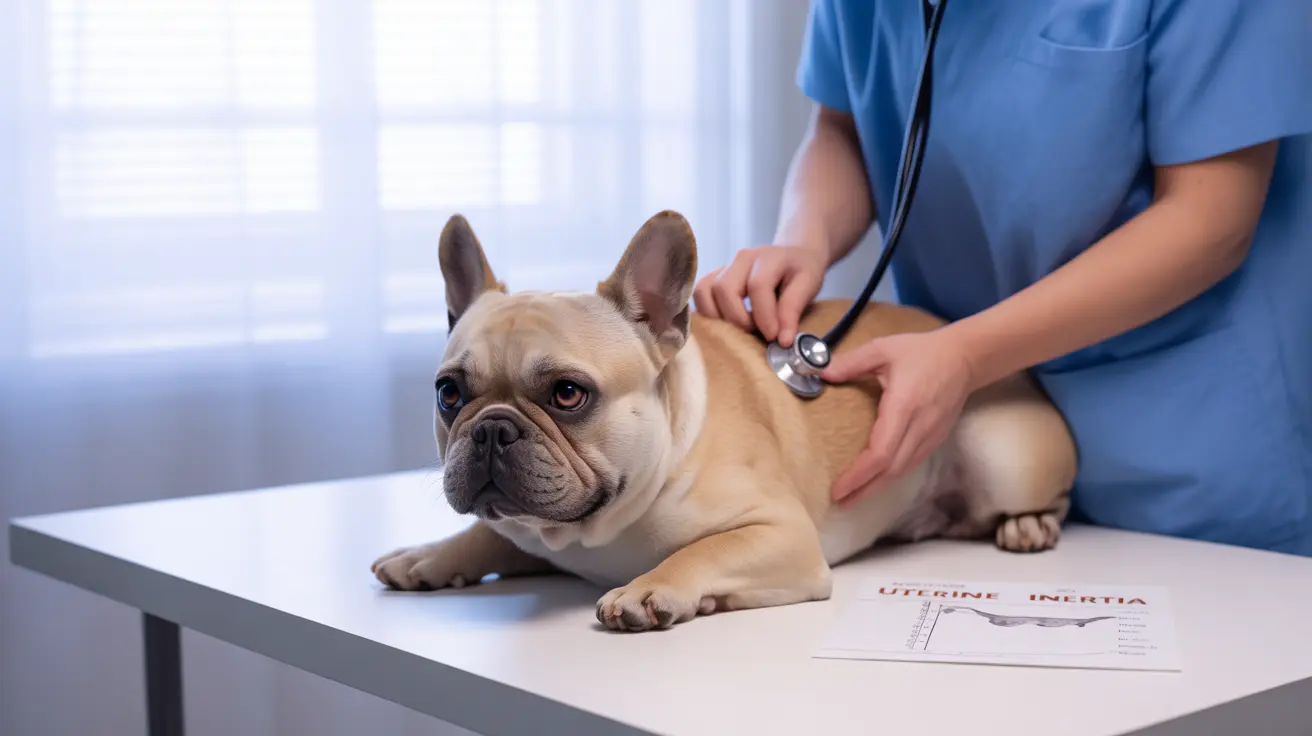When a dog's labor stalls or fails to progress, uterine inertia might be the culprit. This serious reproductive condition occurs when the uterus fails to contract effectively during labor, potentially endangering both mother and puppies. Understanding uterine inertia is crucial for dog breeders and pet owners alike, as prompt recognition and treatment can make the difference between a successful whelping and a medical emergency.
As one of the leading causes of difficult birth (dystocia) in dogs, uterine inertia requires immediate veterinary attention. This comprehensive guide will explore the types, causes, symptoms, and treatment options for this challenging condition.
Types of Uterine Inertia
Primary Uterine Inertia
Primary uterine inertia occurs when the uterus fails to begin effective contractions at the start of labor. Dogs with this condition show no signs of active labor despite being full-term. This type is particularly common in small breeds and brachycephalic dogs like Bulldogs and Boston Terriers.
Secondary Uterine Inertia
Secondary uterine inertia develops after the delivery of one or more puppies when the uterine muscles become exhausted. This often happens due to a prolonged or obstructed labor, resulting in weak or ceased contractions while puppies remain undelivered.
Risk Factors and Causes
Several factors can contribute to the development of uterine inertia in dogs:
- Hormonal imbalances, particularly involving oxytocin
- Calcium deficiency (hypocalcemia)
- Obesity and lack of exercise
- Large litter sizes causing uterine stretching
- Genetic predisposition in certain breeds
- Advanced maternal age
- Poor nutrition during pregnancy
Recognizing the Signs
Early detection of uterine inertia is crucial for successful intervention. Watch for these warning signs:
- No signs of labor beyond 70 days post-ovulation
- Green or black vaginal discharge without puppy delivery
- More than two hours between puppy deliveries
- Visible straining without producing puppies
- Weak or absent contractions
- Loss of appetite and restlessness
Diagnosis and Treatment Options
Veterinarians diagnose uterine inertia through several methods:
- Physical examination
- Blood tests for calcium and glucose levels
- Ultrasound to assess puppy positions and viability
- X-rays to confirm remaining puppy count
- Evaluation of the Ferguson reflex
Treatment approaches may include:
- Calcium supplementation under veterinary supervision
- Oxytocin administration when appropriate
- Intravenous fluid therapy
- Emergency cesarean section if medical management fails
Prevention Strategies
While not all cases of uterine inertia can be prevented, certain measures can reduce risk:
- Maintaining proper weight and exercise during pregnancy
- Following veterinary-approved nutrition guidelines
- Regular prenatal check-ups
- Careful breeding selection, especially in high-risk breeds
- Monitoring calcium levels throughout pregnancy
Frequently Asked Questions
What are the signs and symptoms of uterine inertia in dogs during labor?
The main signs include failure to begin labor at term, weak or absent contractions, prolonged intervals between puppy deliveries (over 2 hours), and visible straining without producing puppies. Green or black vaginal discharge without puppy delivery is also a concerning sign.
Which dog breeds are most at risk for uterine inertia and difficult birth?
Brachycephalic breeds (Bulldogs, Boston Terriers, Pugs), small breeds (Chihuahuas, Dachshunds), and breeds with large heads relative to body size are at highest risk. These breeds often have a genetic predisposition to birthing difficulties.
How do veterinarians diagnose and treat uterine inertia in dogs?
Diagnosis involves physical examination, blood tests, ultrasound, and X-rays. Treatment may include calcium supplementation, oxytocin administration, fluid therapy, and cesarean section when necessary.
What causes uterine inertia in dogs, and how can it be prevented in pregnant pets?
Common causes include hormonal imbalances, calcium deficiency, obesity, and genetic factors. Prevention involves maintaining proper weight, ensuring appropriate nutrition, regular exercise, and careful monitoring during pregnancy.
Is it safe to use oxytocin or calcium supplements at home for dogs with uterine inertia?
No, it's not safe to administer oxytocin or calcium supplements without veterinary supervision. Incorrect usage can cause serious complications. Always consult a veterinarian for proper diagnosis and treatment of uterine inertia.
Remember, uterine inertia is a serious condition requiring prompt veterinary attention. Understanding the signs and seeking immediate care when needed can help ensure the best possible outcome for both mother dog and puppies.






